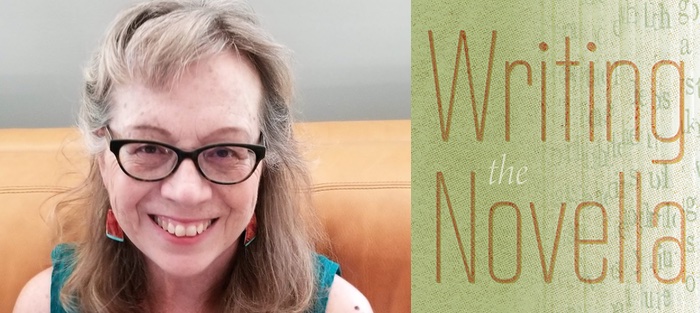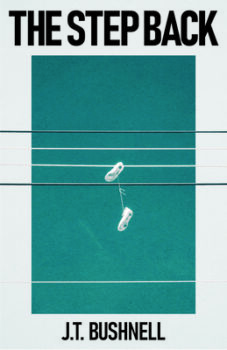“The novella is everywhere, even if it is called by another name.” —William Giraldi
Alternative facts are crazy-making and never more so than when they are associated with contested elections and enormous calamities: The coronavirus is not a hoax. Neither is climate change. In comparison, my plea for truth-in-advertising may seem inconsequential. But for those of us who read and write fiction, accuracy matters. Marketing novellas as novels does a disservice to literature with a big L.
Don Delillo’s new “novel,” The Silence, is 128 pages long. My Nook version is eighty pages. That’s not a novel. Anne Tyler’s new book, Redhead by the Side of the Road, is not a novel, either, but it’s a tome if you measure it against The Silence. Am I criticizing these two literary luminaries for not going the distance? Not at all. I’m delighted they are writing novellas because I love intermediate-length fiction. I just wish they—or, their publishers—would call it by its name.
 In Writing a Book That Makes a Difference, Philip Gerard offers clear distinctions between the novella and the novel. A novella, he says, “commonly follows the fortunes of a single character through a limited time in a circumscribed locale, focusing on a single action.” Mary Doyle Springer, author of Forms of the Modern Novella, specified the novella’s length as 15,000-50,000 words. Others may measure a little differently. In recent years, the small press publisher Melville House has exerted considerable influence on the public perception of the novella. Their series, The Art of the Novella, includes some forty exemplars of the form which range in length from 10,000-60,000 words.
In Writing a Book That Makes a Difference, Philip Gerard offers clear distinctions between the novella and the novel. A novella, he says, “commonly follows the fortunes of a single character through a limited time in a circumscribed locale, focusing on a single action.” Mary Doyle Springer, author of Forms of the Modern Novella, specified the novella’s length as 15,000-50,000 words. Others may measure a little differently. In recent years, the small press publisher Melville House has exerted considerable influence on the public perception of the novella. Their series, The Art of the Novella, includes some forty exemplars of the form which range in length from 10,000-60,000 words.
Gerard likens the novel to a cathedral. To write one, he says, “you’ve got to create a large, durable, multi-faceted story structure that will illuminate what’s inside: the characters whose actions and interior lives tangle and disengage, sprawling and across continents and years.” If the novel is a cathedral, the novella is a church, a structure large enough to hold a wedding or a funeral, but small enough to feel cozy on dreary Sunday mornings. The church holds fewer people than the cathedral and is, in a manner of speaking, more utilitarian—easier to build, more comfortable to occupy. Finding your way in or out is never a problem.
Except for length, novellas are not less than novels. Indeed, sometimes they are more. Here I think of Breakfast at Tiffany’s, A Christmas Carol, Animal Farm, A Clockwork Orange, and The Dead, to name only a few. According to several lists, the bestselling book of all time (excepting the Bible) is a novella: The Little Prince by Antoine de Saint-Exupery.
Want more proof of the novella’s prowess? Ernest Hemingway’s last book, The Old Man and the Sea, might well have been his best. A mere 127 pages, it was first published in Life magazine as an insert. Hemingway won the 1953 Pulitzer Prize for The Old Man and the Sea. And, in 1954, it was cited by the committee that awarded the author the Nobel Prize in Literature. In 1965, when Yasunari Kawabata became the first Japanese Nobel Laureate, the committee pointed to three of his books, all of them novellas. Of these, Snow Country is the best known and a favorite of mine. Then there’s the 2014 Nobel Prize winner, French writer Patrick Modiano. Modiano has written intermediate-form fiction for his entire career.
In a 2018 Electric Literature essay entitled “Why Doesn’t America Love the Novella?” Tobias Carroll notes that Europeans have an altogether different attitude about the intermediate form. In a word, they embrace it. Carroll writes about visiting a bookstore in Edinburgh, where he spotted a table display of novellas “with a sign extolling the virtues of a quick, efficient read.” His writer friends have reported similar sightings in Denmark and Iceland. Carroll offers as further evidence the translated fiction that makes its way to America. These books tend to be “notably slimmer” than similar books published here.
Some of Stephen King’s most beloved fiction is intermediate length: The Body became the film “Stand by Me,” and Rita Hayworth and Shawshank Redemption, well, that became, you know, “The Shawshank Redemption.” King has famously referred to the novella as “an ill-defined and disreputable literary banana republic,” expressing his frustration with editors who dismiss or discourage it. But irritation doesn’t deter him. His recent book, If It Bleeds, is a novella quartet. Washington Post reviewer Bill Sheehan explains why King’s novellas are some of his best work:
King, of course, has made good use of virtually every mode of storytelling: short stories, screenplays, novels, multivolume epics and what he referred to as his “novel for television,” the miniseries “Storm of the Century.” But the mid-length narrative suits his talents particularly well, permitting a degree of expansiveness while maintaining a controlled, disciplined approach to the material at hand. The results are stories that cover a surprising amount of emotional territory but can still be read in a sitting.
Then there’s Ian McEwan, author of several novellas, including On Chesil Beach, Nutshell, and Booker Prize-winner, Amsterdam. Back in 2012, McEwan wrote a moving testament to the intermediate form in the New Yorker. His “Some Notes on the Novella” explains why McEwan considers the novella “the perfect form of prose fiction.”
Let’s take, as an arbitrary measure, something that is between twenty and forty thousand words, long enough for a reader to inhabit a world or a consciousness and be kept there, short enough to be read in a sitting or two and the whole structure to be held in the mind at first encounter [emphasis mine]—the architecture of the novella is one of its immediate pleasures.
Consumable-in-one-sitting is key to the novella experience. As author Debra Spark says, the novella is “Goldilocks form, not too much this and not too much that but just right.” If you google “one-sitting” novel, you will unlock a plethora of listicles. Here’s Adrienne Westenfeld in an August 7, 2020, Esquire piece, extolling fifteen extraordinary “binge-worthy” books:
The one-sitting novel isn’t just something you can read in one afternoon—it’s something you should read in one afternoon. The one-sitting novel is perfectly structured to be consumed as a complete, transporting experience, whether that’s a breakneck ride through a thrilling narrative, or a slow, dreamy fog that envelops your mind as you page through.
One of the binge-worthy books Westenfeld recommends is Pizza Girl, by Jean Kyoung Frazier. I first learned of Pizza Girl in “First Fiction 2020,” the lead article in the July/August 2020 issue of Poets & Writers. Frazier’s discussion of her book’s structure grabbed my attention:
I knew early on this would be a short novel. I write short by nature, but particularly with this story and voice, I felt like having it unfold quickly and in a tight space would make the reader feel trapped, suffocated by the narrator’s loneliness, sweating at her breakneck descent into disaster. I liked the idea of being able to read it in one sitting [emphasis mine].
Westenfeld and Frazier are onto something, but the books they are extolling are novellas, not novels. How do I know? Because fictional forms are containers. They hold narratives constructed of paragraphs composed of sentences built with words. And the containers come in different sizes because length is one of the key determinants of narrative structure.
In “Some Notes on the Novella,” McEwan explains that reading one is akin to “watching a play or a longish movie,” which is why so many novellas are adapted for film. They settle comfortably into the screenplay format, which generally runs about 120 pages. You see, the screenplay container cannot hold the width and breadth of a big book. Adapting a weighty novel, the prudent screenwriter will dispense with a subplot or two or even three.
Accurate identification of the fictional form is important to readers and authors. But it also makes life easier for book reviewers who walk a tightrope between several different constituencies—the author, the publisher, and the reading public. In the Guardian, Julie Myerson described Redhead by the Side of the Road as “slender” and “unassuming,” adding that it is also Tyler’s “best novel in some time.” Mameve Medwed of the Boston Globe said Redhead is “lean and mean,” wasting “neither scene nor sentence.” But it was Laurie Hertzel of the Star Tribune who described the book in straight-out novella-istic terms:
Tyler’s brief novel covers just a few weeks in Micah’s life and it moves so quickly and seamlessly you might think it slight. You would be wrong.
As in a short story, each observation, each detail, carries meaning: Micah’s smudged glasses; the encroaching disorder in his pristine apartment; his stuck-in-the-past calendar; his dreams about babies.
Want to write a novella and publish it as such? Here in the United States, you have two choices: either find a good independent press or publish more than one novella at a time. Most independent presses publish novellas, though some will want to relabel them. SF/LD Books (Short Flight/Long Drive) specializes in intermediate-length fiction. So do Nouvella and the fledgling press, Los Galesburg. Novella collections are the other option. Rick Bass, Richard Ford, Stanley Elkin, A. S. Byatt, Doris Lessing, Claire Messud, and Francine Prose: all have novella collections among their oeuvres. Jim Harrison published the intermediate form regularly. Andre Dubus, all the time. And, as mentioned above, Stephen King, too.
Allan Gurganus’s novella collection is titled Local Souls. In a short essay proclaiming his love for the form, “A Few Words for the Novella,” Gurganus confesses his pride at “attempting more and more with fewer pages.” And he goes on to say this: “New York publishing continues to favor The Novel as our ideal American form, the basic unit of Fictional Retail. This seems short-sighted, conventional, corporate.”
Another case in point: Earlier this year, my book club read Jacqueline Woodson’s Red at the Bone, which logs in at 117 pages on my Nook and is a little shy of 200 pages in print. Definitely novella territory, though Red at the Bone is marketed as a novel. Heller McAlpin of NPR describes the book beautifully in her review:
The narrative nimbly jumps around in time and shifts points of view among five characters who span three generations — the unplanned child of that high school fling and her parents and grandparents — as it builds toward its moving climax. In less than 200 sparsely filled pages, this book manages to encompass issues of class, education, ambition, racial prejudice, sexual desire and orientation, identity, mother-daughter relationships, parenthood and loss — yet never feels like a checklist of Important Issues.
Whereas Redhead by the Side of the Road and The Silence fit Gerard’s novella definition to a tee, Red at the Bone resists it. The scope is broader, the time frame longer, and the cast of characters larger. But does that mean Woodson’s book is a novel, albeit a very short one? Not necessarily. Woodson is not the first author to trap a genie of a story in a novella-sized bottle.
In his classic book, The Art of Fiction: Notes on the Craft for Young Writers, John Gardner describes a version of the novella he calls “the baby novel,” and his example of such is The Fox by D. H. Lawrence. First published in The Dial in 1922, The Fox is set in the aftermath of World War I and features three protagonists, a love triangle of sorts. Several new editions of The Fox have been published in the last twenty years. (Doris Lessing wrote the introduction for one of them.) According to Gardner, baby novels shift “from one point of view (or focal character) to another. . . with time breaks between, instead of a continuous stream of action.” Woodson’s Red at the Bone is an excellent contemporary example as is Ian McEwan’s novella, On Chesil Beach.
But descriptors like “baby novel” are only useful to writers and scholars. Your average reader has other things on her mind: During the pandemic, she may well want a sizable distraction, not one that is “spare” or “streamlined” or “slender.” Ordering online, downloading Red at the Bone digitally, she might overlook the page count. Here’s an Amazon customer review:
I was really enjoying this book and the characters and the beautiful way Woodson was telling the story and it just ENDS!!! I was waiting for a plot to develop and silly me didn’t realize the book was less than 200 digital pages. That’s the last time I buy a short book for a four hour round trip flight. LOL! But seriously, why buy another one of her titles if the book doesn’t go anywhere?
Had Red at the Bone been listed as a novella, “silly me” would not have been misled and disappointed. Maybe she would have passed on it altogether. But that’s okay. Readers looking for binge-worthy fiction would more easily find it. My point here is that “silly me” thought she’d purchased a novel, a large-sized fictional container.
Here’s how Laurie Henry describes the novel in The Fiction Dictionary: “Because of its greater length, a novel will have more characters, take place over a longer period of time, and involve more movement among settings than a novella or short story.” The takeaway: a novel is not just longer than the novella, it’s longer for a reason. It’s a bigger story but not necessarily a better story.
When I teach MFA fiction workshops, students often ask how many words are in a novel. They know they’re embarking on a marathon of sorts, and they’re anxious about the distance. The query is concerning because it puts the container before the contents. Our goal as fiction writers is not to accumulate words; it’s to tell a compelling story. As Tobias Carroll notes in “Why Doesn’t America Love the Novella?” writers should be wary of overvaluing word counts: “Small novels that are meant to be small are indubitably better than large novels that should have been.”






